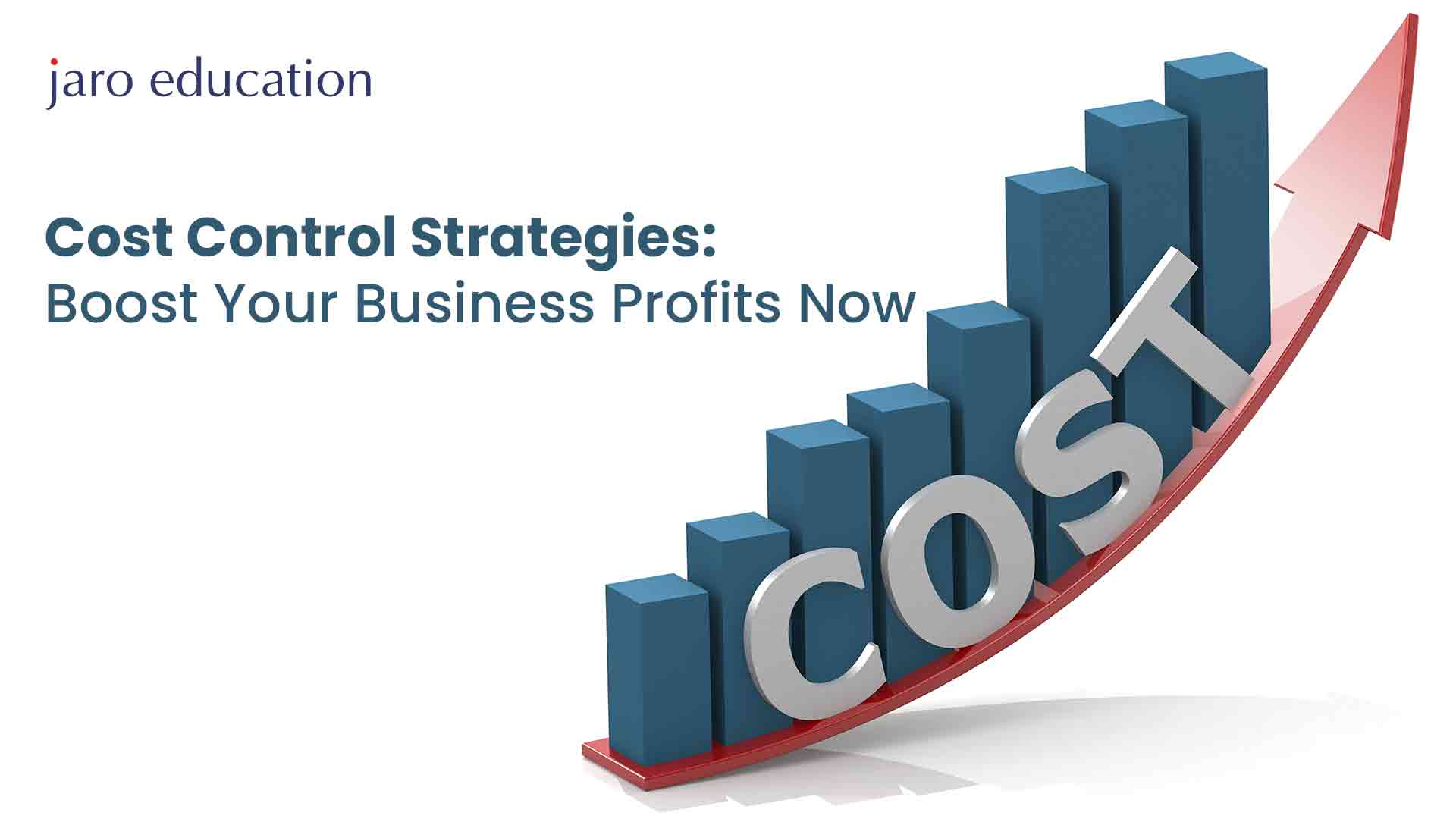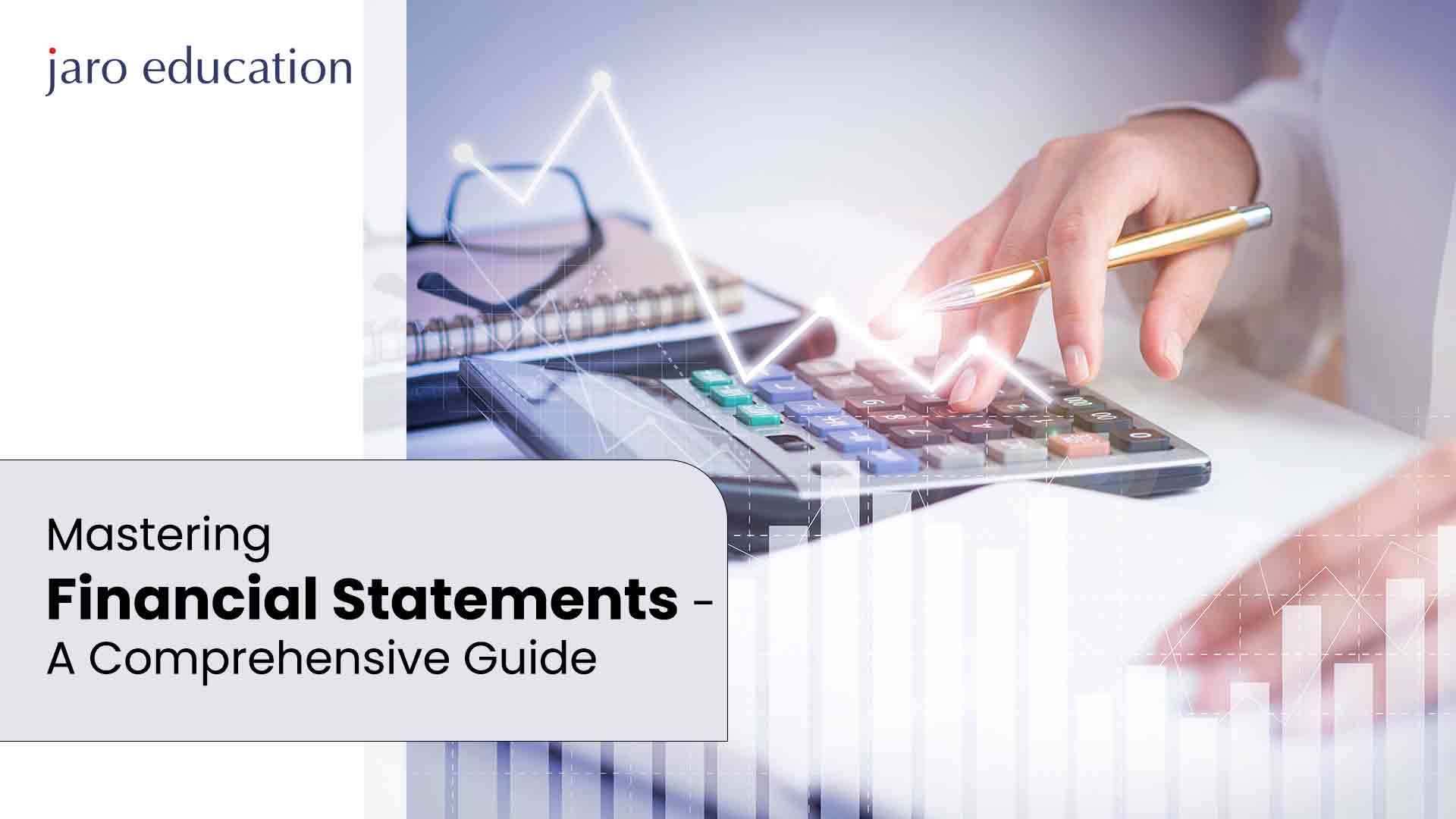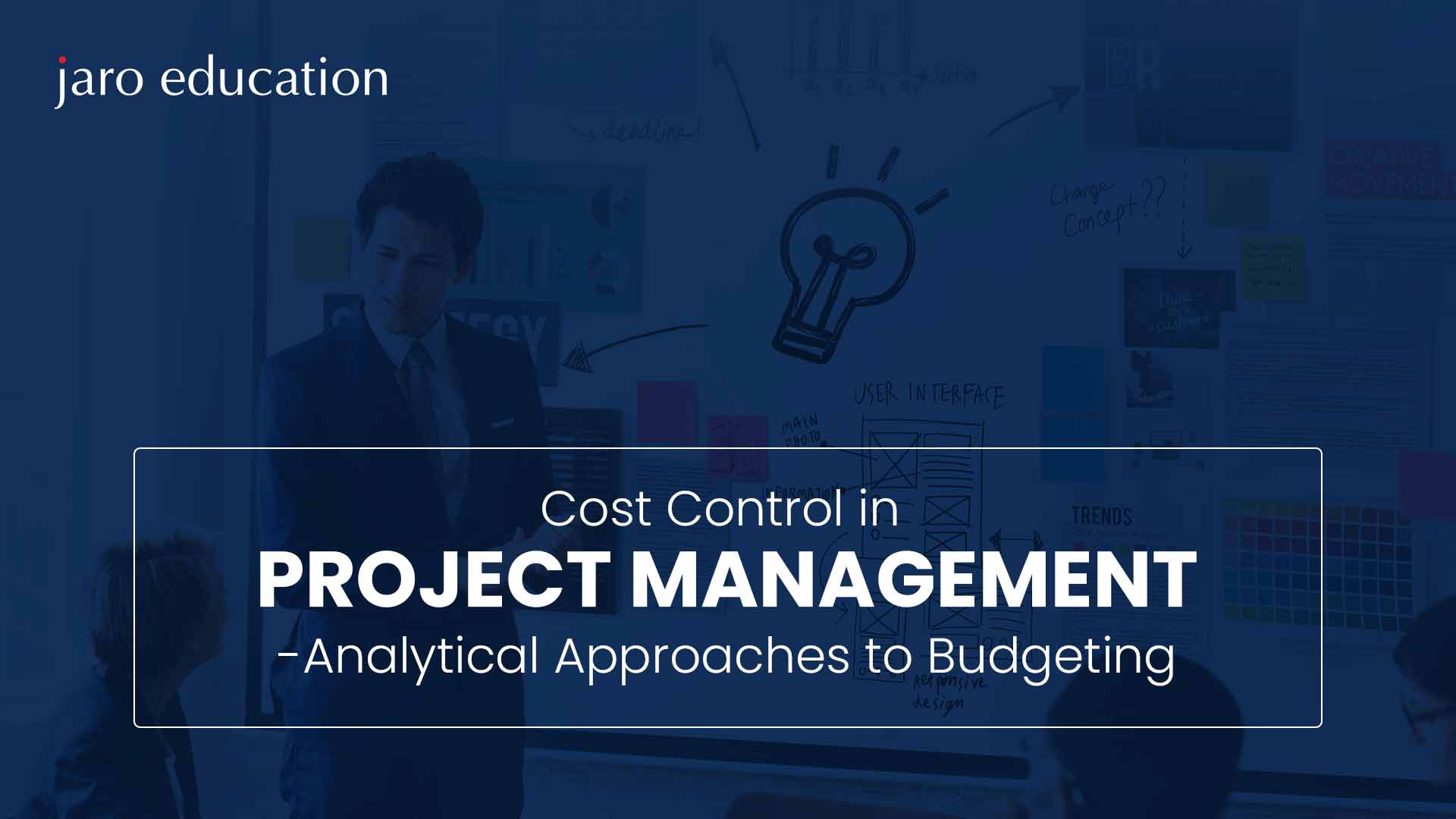Cost Control Strategies: Boost Your Business Profits Now
Table of Contents

- jaro education
- 5, August 2024
- 5:00 pm
Introduction
For any business looking for more profitability, there is a need to manage expenditures effectively. It forms an integral part of cost and control strategies under management in accounting. This blog details the essence of cost control and business techniques, coupled with some elusive insights under the Accelerated General Management Programme by IIM Ahmedabad.
What is Cost Control?
Cost control is managing and monitoring business expenditures to ensure that they remain within a firm’s financial budget. Control of cost and management accounting support business profitability through the control and management of costs. Amazon reported strong third-quarter results, with revenue and operating income tripling year-over-year. Net sales increased 13% to $143.1 billion as mentioned in a report by the Times of India. Weighing in on being cautious, a business may remain profitable since cost control ensures that company costs are scaled down, yet the best quality is provided.
Why is Cost Control Important?
- Improves Efficiency: An effective control of costs assures the wastage of resources is minimal, which ultimately assures the operating efficiency.
- Facilitates Strategic Planning: Cost control indicates the current financial state of affairs of the company and facilitates the decision-making and strategic planning
- Ensures Competitiveness: Companies with effective cost control systems result in competitive pricing that helps them to increase their market share.

Key Techniques for Effective Control on Cost
Sound budgetary practices and cost analysis operate at the very core of the mechanisms that enforce financial discipline to ensure sustainable profitability. Cost efficiency, in the form of strategic purchasing and process efficiencies, will also provide impetus toward maintaining profitability.
Budgeting and Forecasting
Budgeting is preparing a financial plan for the coming period, whereas forecasting represents the prediction of future financial outcomes independent of historical data. They make the framing of the targets of cost control and results to be achieved under the given conditions possible.
- Types of Budgets: The budgets that are widely used in business organizations are static, flexible, and rolling budgets. To some degree, each of them presents a different role and helps manage some different financial aspects.
- Forecasting Models: Organizations use quantitative and qualitative forecasting models to assist them in determining future trends. Time series analysis, regression models, and econometric models are the most used quantitative methods for the development of an accurate forecast.
Variance Analysis
It is used to contrast actual costs with the budgeted data so that the cause of the variance is determined. Therefore, a business can act by rectifying the situation with the cause of the variance in its mind to keep itself within its limits.
- Type of Variances: The common types of variances are Material variance, labor variance, Overhead variance, etc. On the identification of the variance. The business can realize exactly which relevant cost is not going to plan.
- Corrective Actions: On the identification, the business has to correct them by any of the procurement strategy, operational process, and re-negotiation with the supplier.
Activity-Based Costing (ABC)
The ABC method of cost and control allocates overhead costs based on the exact activities that drive costs. This shows a clearer picture of how and where the money is spent. It helps the business identify wasteful activities.
- Steps in ABC: Normally, ABC is implemented in two stages, firstly identification of the cost drivers, to which costs will be attached, and then to products or services. This method is more descriptive.
- Benefits of ABC: By applying ABC, companies can be able to understand a better way of resource management, elimination of wastages, and product pricing strategies.
Benchmarking
A comparison of its performance to the industry standards or competitors unveils some gaps. Benchmarking encourages companies to follow the best procedures in controlling costs.
- Kinds of Benchmarking: The most common include internal benchmarking, competitive benchmarking, and functional benchmarking. Each one of them is oriented to various factors like internal processes, Strategies of
- Competitors or Industry Standards Implementation: Successful benchmarking is through constant monitoring and adopting best practices of industry leaders for cost-effectiveness.
Lean Management
Lean management is all about creating more value from less work but with the need to reduce waste. These usually include applied techniques for process flow and speed. The most prominent ones are Just-In-Time (JIT) inventory management and Six Sigma, which have the same motive of shortening processes and cutting costs.
- Lean Principles: The five principles of lean are identification of value, value stream mapping, creating flow, establishment of pull, and seeking perfection. It helps businesses to remove any scrap and improve the performance index.
- Six Sigma: This is a process that makes use of data-driven approaches to not only eliminate defects but also improve the process by its quality.
Technology and Automation
These technological solutions would, to a great extent, automate mundane or repetitive tasks, reduce labor costs, and assure a better dimension of precision or accuracy in the process. For instance, tools like the Enterprise Resource Planning (ERP) system tie up all the business processes together, bringing in efficiency and control of costs.
- ERP Systems: For example, SAP, Oracle, and Microsoft Dynamics streamline operations by integrating finance, HR, supply chain, and other business functions into a single platform.
- Robotic Process Automation (RPA): RPA tools automate routine work such as entry of data, processing invoices, and customer service and therefore free valuable human resources for more strategic activities.
Practical Advice from Business Leaders
Learning experiences such as the Accelerated General Management Programme by IIM Ahmedabad provide insights into current state-of-the-art techniques in the area of advanced cost control and management accounting. They provide business leaders with the competencies to design effective techniques for cost control.
Cost Management in a Wholesome Approach
This perspective on cost control ensures the alignment of all other aspects within the business towards cost efficiency, thereby integrating measures on cost control across varying departments and functions.
Strategic Cost Management
The programme also anchored on relating cost control to the overall business strategy. This strategic approach enables the cost control efforts to be geared towards long-term business goals.
Real-World Case Studies
Many practical insights into running control of cost strategies come from real-life examples and cases such as these. The cases discuss some challenges that businesses face and how they are able to overcome them.
Advanced Analytical Tools
Special attention should be paid to the usage of advanced analytical tools and techniques. Such tools help make decisions based on data, leading to increased accuracy and productivity of control of cost.
Leadership and Change Management
Effective control of cost, therefore, requires strong leadership as well as managing change. This programme equipped me with the ability to train my leaders to cultivate within them a cost-conscious culture. This means that they can easily handle and overcome the challenges that arise in the process of implementing cost control.
How to Implement Cost Control in Your Business
The following steps should be followed when implementing cost control strategies to your business.

State Objectives
Be definite about control of cost objectives that meet business expectations. Set smart objectives: specific, measurable, achievable, relevant, and time-bound.
Employee engagement
Engage all levels of employees in controlling costs, train them, and empower them to come up with and develop cost reduction measures.
- Training Programs: Periodic training sessions on efficiency and cost management techniques. Ensure that employees are aware and can be able to participate.
- Employee Involvement: Raise the spirit of open communications where the employee can give ideas concerning cutting costs and improving improvements.
Monitor and Review
Regularly monitor and test control of cost measures for operability. Measure the cost and establish performance measures that show when changes should be made.
- Routine Audits: There needs to be regular auditing of financial accounts to determine whether cost control policies are being adhered to. Identify areas that can be improved and act on corrective measures in a timely fashion.
- Performance Indicators: A set of Key Performance Indicators should be developed as measures to evaluate how well your cost control measures are working. This area requires regular reviews to enhance the elements that are measured.
Leverage Technology
Invest in technology solutions that can help in increasing efficiency and support cost-control initiatives. For instance, automation, data analytics, and ERP system solutions can go a long way in allowing better management of costs.
- Data Analytics: Employ sophisticated data analytics in developing new insights into spending patterns and the identification of likely cost reductions. It can predict the cost that one might incur in the future and therefore plan for the same.
- Cloud Solutions: Adopt cloud-based solutions to bring down the IT infrastructure costs and increase the scalability of the system. The cloud platforms provide flexibility and cost benefits for growing businesses.
Continuous Improvement
Control of cost is a continuous process. Always seek improvements; standardize operational procedures as per best practices in the industry, and the latest trends.
- Kaizen Approach: Kaizen is a way of thinking and philosophy that advocates for continuous improvement. A little improvement is encouraged, saving a significant amount of money in the long run.
- Industry Trends: Monitor the recent developments and technological progress in the industry. Modify your cost-controlling strategies to seize a new opportunity and innovation as it presents itself.
Conclusion
Control of cost is among the most vital business management activities related to profit. The practice relies on proper cost control measures for an increase in efficiency, ability to support planning, and ultimately to sharpen the competitive edge of a business. Adopt these strategies and thereby ensure that your business thrives in a competitive landscape. Reskill your learning levels and acumen by pursuing the Accelerated General Management Programme by IIM Ahmedabad, which will provide deep insights that can further enhance your control of cost efforts.












